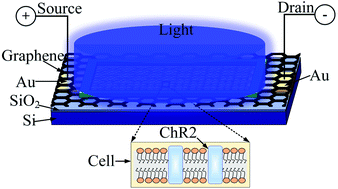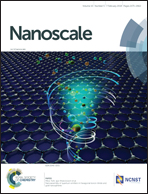Label-free multidimensional information acquisition from optogenetically engineered cells using a graphene transistor†
Abstract
The optogenetic technique, which allows the manipulation of cellular activity patterns in space and time by light, has transformed the field of neuroscience. However, acquiring multidimensional optogenetic information remains challenging despite the fact that several cellular information detection methods have been proposed. Herein, we present a new method to acquire label-free multidimensional information from optogenetically engineered cells using a graphene transistor. Using a graphene film to form a strong densely packed layer with cells, the cellular action potentials were characterized as light-activated transistor conductance signals, which quantified the multidimensional optogenetic information. Based on this approach, some important cellular optogenetic information, including electrophysiological state, cell concentration, expression levels of opsin and response to variable light intensity, were also precisely detected. Furthermore, the graphene transistor was also used to distinguish cells expressing different channelrhodopsin-2 variants. Our study offers a general detection method of multidimensional optogenetic information for extending the applications of the optogenetic technique and provides a novel sensor for the development of future biological prosthetic devices.



 Please wait while we load your content...
Please wait while we load your content...